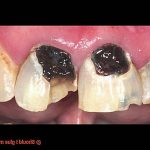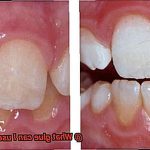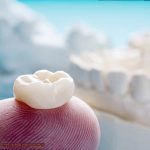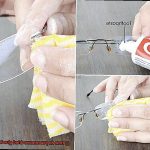Do you find yourself frustrated with pesky super glue residue on your rubber items? It can be quite a challenge to get rid of it without damaging the material. Super glue is notorious for leaving behind stubborn marks and residue on surfaces, especially on rubber. But don’t worry, we’ve got you covered.
In this blog post, we’ll explore the top techniques to remove super glue residue from rubber materials effectively and without causing any harm. From simple DIY methods using household items to specialized products for extra stubborn residue, we’ve got all the solutions you need.
But why stop at just removing the residue when you can prevent it altogether? We’ll also delve into some preventive measures you can take to avoid this problem in the first place. By following our tips and tricks, you can ensure that your rubber items remain clean and free from any damage caused by leftover glue residue.
So whether it’s cleaning off glue residue from rubber gloves, linings, or tool handles, this blog post has got everything you need to know. Stay tuned for expert advice that will leave your rubber items spotless in no time.
What You Need to Know Before Removing Super Glue Residue from Rubber
Contents
Removing super glue residue from rubber may seem like a daunting task, but with the right precautions and techniques, it can be accomplished safely and effectively. Before embarking on this endeavor, there are a few essential things to keep in mind.
Firstly, identifying the type of rubber you are dealing with is crucial. Different types of rubber may have different reactions to chemicals and solvents used for removing super glue residue. Therefore, testing a small, inconspicuous area of the rubber before applying any solvent or chemical is critical to ensure that it does not cause any damage or discoloration.

Secondly, it is vital to protect yourself by wearing protective gloves and working in a well-ventilated area when using any chemicals or solvents. This will prevent potential hazards or harm to your skin or respiratory system.
Moreover, patience and a gentle touch are essential when removing super glue residue from rubber. Rushing the process or using excessive force can cause damage to the rubber surface.
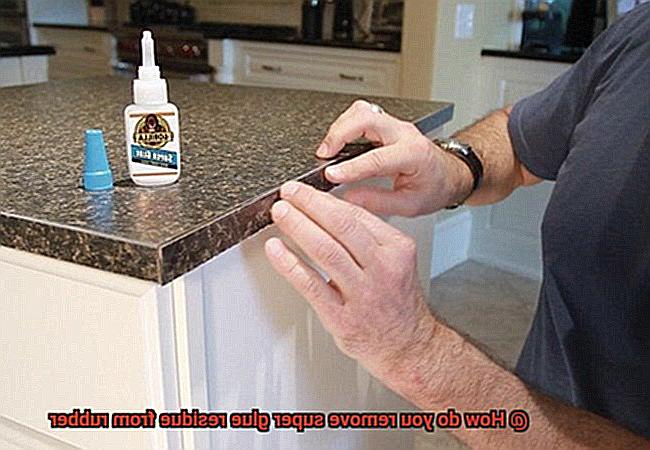
If you decide to use acetone as a solvent, it’s important to note that it can potentially damage certain types of rubber. Hence, it is crucial to test a small area first before applying it. Rubbing alcohol or vinegar can be used as alternative options if acetone fails to work. Although they are not as effective as acetone, they are safer for delicate types of rubber.
Finally, if all else fails, commercial adhesive removers designed explicitly for removing super glue residue from rubber are available at most hardware or home improvement stores.
How do you remove super glue residue from rubber
Method 1: Acetone
Don’t worry – there is a solution. Acetone is a commonly used solvent for removing super glue residue from rubber, but proceed with caution as it can be harsh and drying to the material.
Before starting, ensure that you are working in a well-ventilated area and consider wearing gloves and safety glasses for added protection. Soak a cotton ball or swab in acetone and gently apply it to the affected area. Be mindful not to use too much acetone, as this can damage the rubber. Instead, work slowly and carefully, repeating the process several times until the residue dissolves completely.
Once the super glue residue has been removed, rinse the rubber thoroughly with water and dry it off completely. Apply a small amount of petroleum jelly or silicone lubricant to the rubber to help restore its elasticity and prevent cracking.
Keep in mind that while acetone can be effective, it should only be used as a last resort due to its potentially damaging effects on the material.
Before attempting this method, try other less harsh alternatives such as rubbing alcohol or vinegar.
Advantages
First, it can save you a ton of money and time. You no longer have to worry about replacing expensive rubber items like phone cases or keyboards due to super glue damage. Instead, by simply removing the residue, you can restore your items to their former glory and keep your hard-earned cash in your wallet.
But it’s not just about saving money – knowing how to remove super glue residue from rubber can also help maintain the appearance of your belongings. Super glue residue can leave unsightly marks on rubber surfaces, which can be especially frustrating when dealing with high-end items like designer shoes or handbags. By effectively removing the residue, you can keep your belongings looking pristine and avoid any embarrassment from unsightly marks.
And let’s not forget about safety. Another advantage of this skill is that it can help prevent accidents. Super glue residue on rubber surfaces can make them slippery and difficult to handle, increasing the risk of slips and falls. By removing the residue promptly, you can avoid potential accidents and injuries.
Disadvantages
When it comes to bonding rubber materials, super glue may seem like a quick and easy solution. However, it is important to be aware of the potential disadvantages that come with this adhesive.
One major drawback of using super glue on rubber is that it can make the material brittle and stiff. This can lead to cracking or breaking, which defeats the purpose of repairing it in the first place. Additionally, if the rubber is exposed to high temperatures, the bond created by the glue can weaken, resulting in separation of the materials.
Another disadvantage of super glue on rubber is its tendency to create a mess. If not applied carefully, the glue can spread over the surface of the rubber and leave behind unsightly residue. Removing this residue can be challenging as it can stick to surfaces and cause damage to the rubber if not done correctly.
Lastly, super glue may not always be the best adhesive for rubber. Depending on the project, a more specialized adhesive may be needed to ensure a strong and lasting bond. For instance, if you’re gluing rubber parts that will be under stress or movement, an adhesive that provides both strength and flexibility will be required.
Method 2: Rubbing Alcohol or Vinegar
It can be a frustrating experience, but don’t worry, there is a solution that you probably have in your home already. Let’s explore method 2 for removing super glue residue from rubber: using rubbing alcohol or vinegar.
Rubbing alcohol, also known as isopropyl alcohol, is a household item that can work wonders when it comes to dissolving super glue residue. However, it’s important to note that rubbing alcohol should not be used on certain types of rubber, such as natural rubber, as it can cause damage or discoloration. Simply apply the rubbing alcohol to a cloth or cotton ball and gently rub the affected area until the super glue residue starts to dissolve. It may take several applications, but with persistence, the residue should eventually come off.
Vinegar is another household item that can be effective in removing super glue residue from rubber. Its acidic properties can help break down the adhesive and make it easier to wipe away. However, undiluted vinegar can cause damage to certain types of rubber. To use vinegar safely, mix it with water in a 1:1 ratio and apply it to a cloth or cotton ball. Gently rub the affected area until the residue starts to dissolve.
When using either rubbing alcohol or vinegar, make sure you are working in a well-ventilated area away from any open flames or heat sources. Additionally, gloves should be worn when handling rubbing alcohol to avoid skin irritation.
Advantages
Not only can it save you money by avoiding the need to replace damaged items, but it can also help you avoid the frustration and stress caused by ruined items.
But the benefits don’t stop there – this skill can also be invaluable in a professional setting. If you work with rubber materials in a manufacturing plant, accidents happen, and super glue may end up on the material. Knowing how to swiftly and effectively remove the glue residue can save your company time and money.
Moreover, being able to fix items yourself instead of relying on professionals can make you more self-sufficient. It gives you the confidence to take matters into your own hands and tackle problems yourself.
Disadvantages
While removing it can be satisfying, it’s important to be aware of the potential downsides.
One major disadvantage is that some methods used to remove the glue can damage the rubber surface. This is especially concerning for delicate or expensive items like shoes or phone cases, where a single mistake could result in permanent damage.
Another downside is that removing super glue residue can be time-consuming and tedious. Applying solvents like acetone or nail polish remover may require repeated applications and rubbing, leading to frustration and wasted effort.
Furthermore, not all rubbers are created equal. Some may be more resistant to solvents, making it challenging to remove the glue without causing damage. Always test a small area first before attempting to remove the glue from larger surfaces.
Method 3: Commercial Adhesive Removers
Fear not, as there is a simple solution to this sticky situation. Method 3 for removing super glue residue from rubber involves using commercial adhesive removers that are specifically designed to break down and dissolve adhesives, including super glue. However, it’s important to note that not all adhesive removers are suitable for use on rubber surfaces.
When selecting a commercial adhesive remover, take care to choose one that is safe for use on rubber. Some adhesive removers may contain harsh chemicals that can damage or discolor rubber surfaces. So, it’s recommended to read the labels carefully before purchasing an adhesive remover and perform a patch test on a small, inconspicuous area of the rubber surface before using it extensively.
To use a commercial adhesive remover, start by applying a small amount of the product onto a clean cloth or cotton ball. Gently rub the affected area with the cloth, being mindful not to apply too much pressure or scrub too hard. Leave the product to sit on the surface for a few minutes as per the manufacturer’s instructions.
After allowing the product to sit, use a clean cloth to wipe away the adhesive residue. Depending on the strength of the adhesive and the effectiveness of the product, it may take several attempts to completely remove all traces of super glue from the rubber surface. Patience and persistence are key.
It’s crucial to always follow safety precautions when using commercial adhesive removers. These products can be harmful if ingested or come into contact with skin or eyes, so wear gloves and protective eyewear when using them and always work in a well-ventilated area. If you experience any adverse reactions while using an adhesive remover, seek medical attention immediately.
Advantages
Firstly, it saves you from the frustration of having to throw away items that have been ruined by glue. We’ve all been there – accidentally spilling glue on a beloved rubber item and feeling disheartened at the thought of it going to waste. With the right techniques, however, you can salvage these items and prevent unnecessary waste.
Not only does it save you from throwing away items prematurely, but it also saves you money. By being able to remove super glue residue from rubber, you can avoid having to replace an item that could have been salvaged with proper removal techniques. This small but significant way of making your budget go further can add up over time.
Moreover, knowing how to remove super glue residue from rubber can help maintain the quality and functionality of rubber items. For instance, if you have a rubber sole shoe that has accidentally been glued, knowing how to remove the residue can help maintain the grip and traction of the sole. This ensures that your shoes remain as safe and effective as possible.
Lastly, removing super glue residue from rubber items can prevent potential safety hazards. If glue residue is left on rubber items meant for frequent handling, such as tools or handles, it can create a slippery and dangerous surface. By properly removing the residue, you ensure that the item remains safe to use and prevent any accidents from happening.
Disadvantages
When it comes to removing super glue residue from rubber, there are some potential downsides to consider. While it’s important to remove the residue to maintain the quality and safety of your rubber items, you also want to ensure that you don’t damage them in the process.
One major disadvantage is that removing super glue residue from rubber can be a time-consuming and tedious task. Depending on the amount of glue and how long it has been on the rubber, it may require several attempts to fully eliminate it.
Another downside is that certain methods for removing super glue residue can actually harm the rubber itself. Using acetone or nail polish remover, for example, can cause the rubber to become brittle and even crack over time. It’s crucial to choose a safe and effective method that won’t harm your rubber items.
In addition, some methods for removing super glue residue can leave behind their own residue or mess. Rubbing alcohol, for instance, may leave a sticky residue that requires cleaning with soap and water.
Lastly, some methods may not work at all depending on the type of rubber and super glue used. Therefore, it’s always wise to test any method on a small area before attempting to remove the entire residue.
Tips for Successfully Removing Super Glue Residue from Rubber
We’ve got some great tips and tricks to help you successfully remove the glue residue without damaging the rubber surface.
Use Gentle Household Items
The key to removing super glue residue from rubber is to use gentle household items like rubbing alcohol, vinegar, or cooking oil. These items are effective in breaking down the glue without causing any damage to the rubber surface.
Try Rubbing Alcohol
Rubbing alcohol is one of the most effective solutions for removing super glue residue from rubber. All you need to do is apply some onto a cotton ball or cloth and gently rub over the affected area until the glue starts to dissolve. Repeat this process if necessary until all the glue has been removed.
Vinegar and Cooking Oil Work Too
If you don’t have rubbing alcohol on hand, you can try using vinegar or cooking oil instead. For vinegar, mix equal parts of vinegar and water and apply the solution onto the affected area. Let it sit for a few minutes before wiping off with a clean cloth. For cooking oil, simply apply some onto a cotton ball or cloth and rub gently over the residue until it begins to dissolve.
Be Patient
It’s important to note that removing super glue residue from rubber may take some time and multiple attempts. So be patient and keep trying until all the glue has been removed.
Test Any Product First
Lastly, it’s important to test any product on a small, inconspicuous area of the rubber first to ensure that it does not cause any damage or discoloration.
_59ZzuLJcTw” >
Conclusion
In conclusion, removing super glue residue from rubber may seem like a daunting task, but it can be done safely and effectively with the right techniques and precautions. It’s important to identify the type of rubber you’re dealing with and protect yourself by wearing gloves and working in a well-ventilated area when using any chemicals or solvents.
While acetone is a commonly used solvent for removing super glue residue from rubber, it should only be used as a last resort due to its potentially damaging effects on the material. Instead, consider trying gentler alternatives such as rubbing alcohol or vinegar before turning to commercial adhesive removers.
Knowing how to remove super glue residue from rubber can save you time and money while also preserving the appearance of your belongings and preventing accidents. However, there are potential downsides such as damaging the rubber surface or spending a lot of time on tedious removal processes.
To successfully remove super glue residue from rubber, use gentle household items like rubbing alcohol or vinegar, take your time, and test any product first before applying it extensively.


